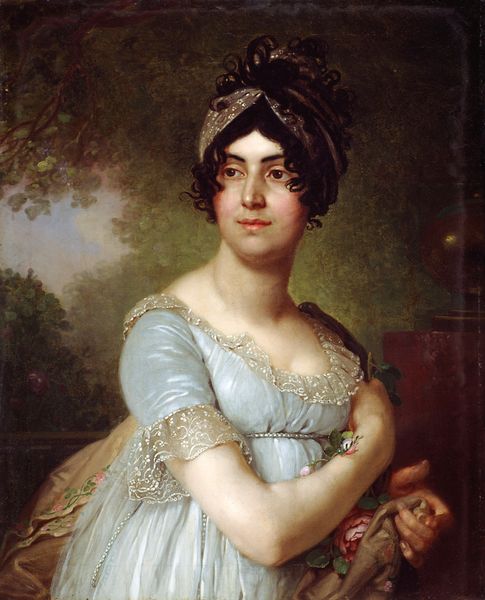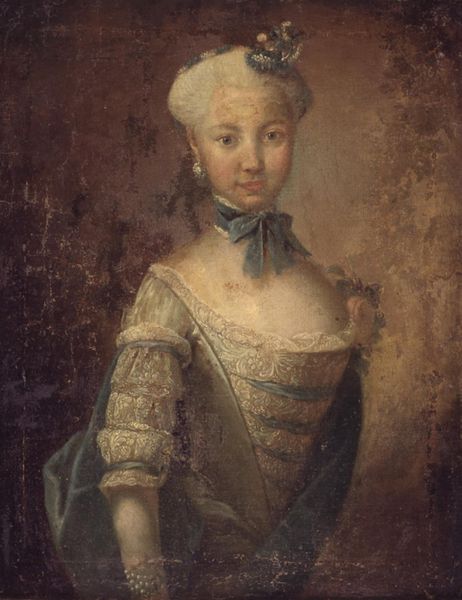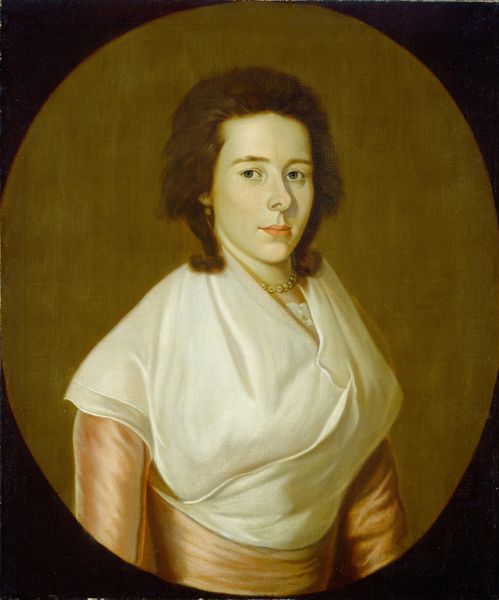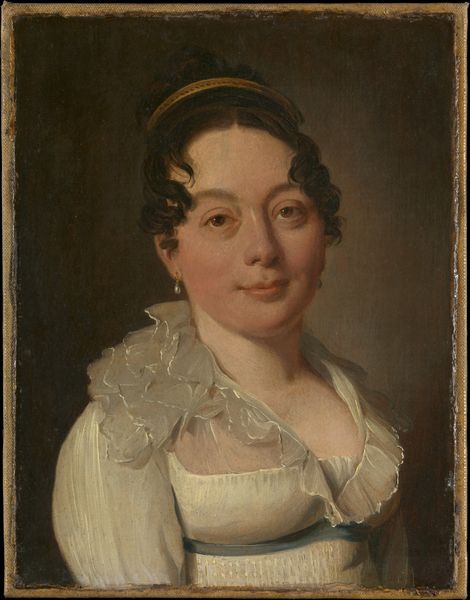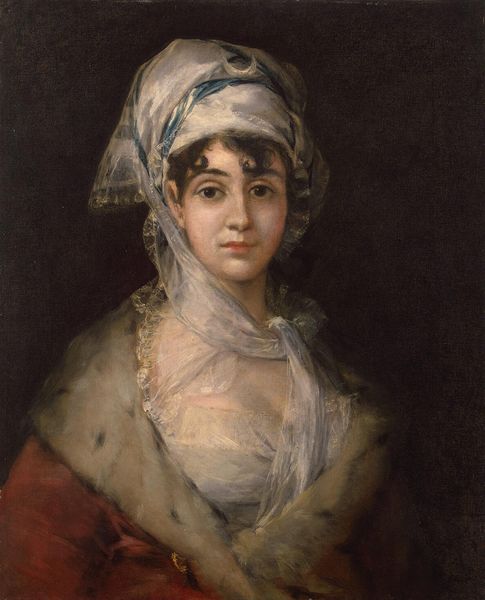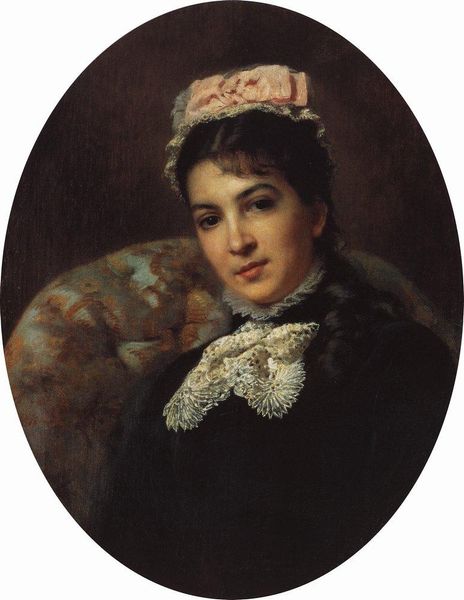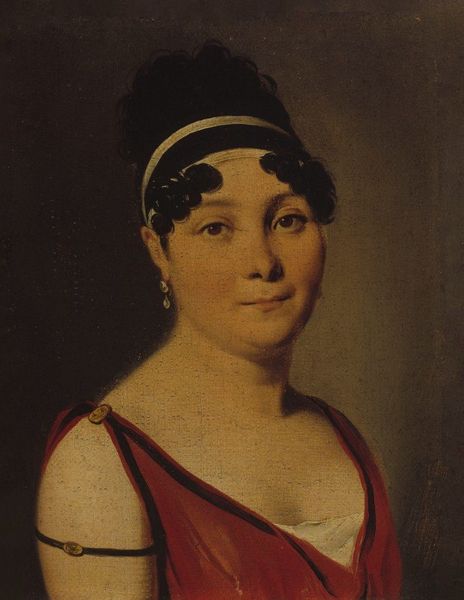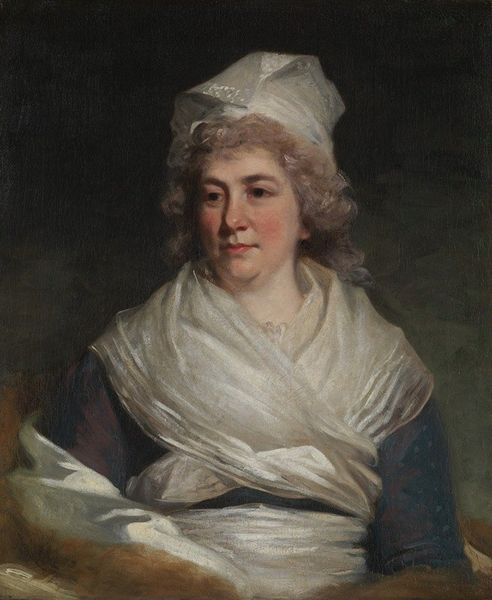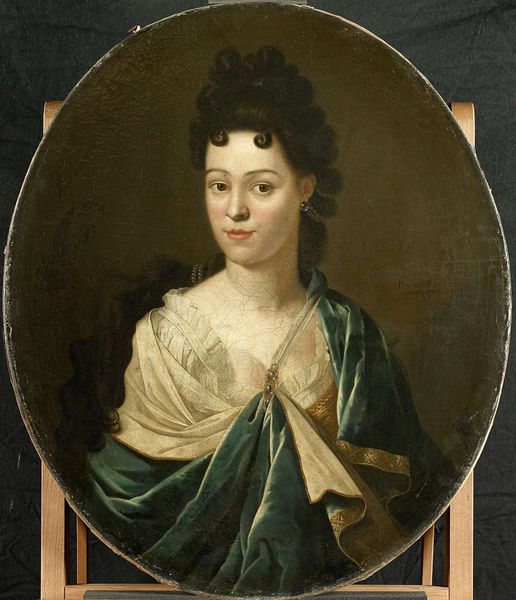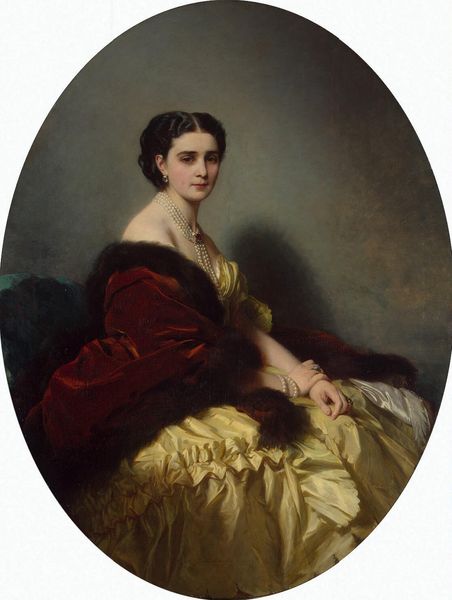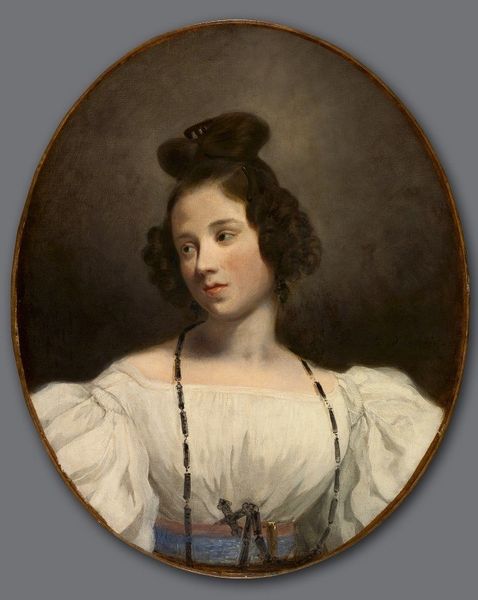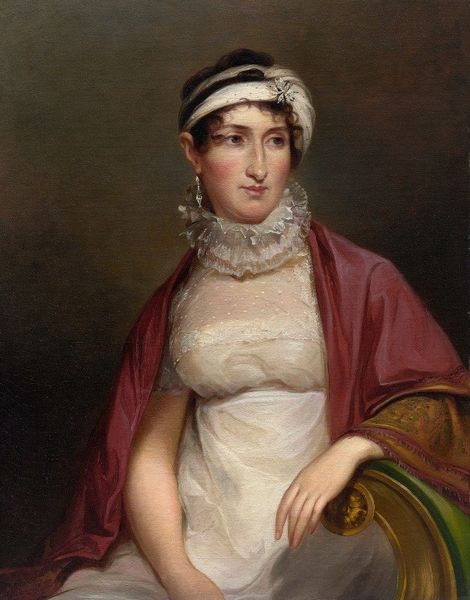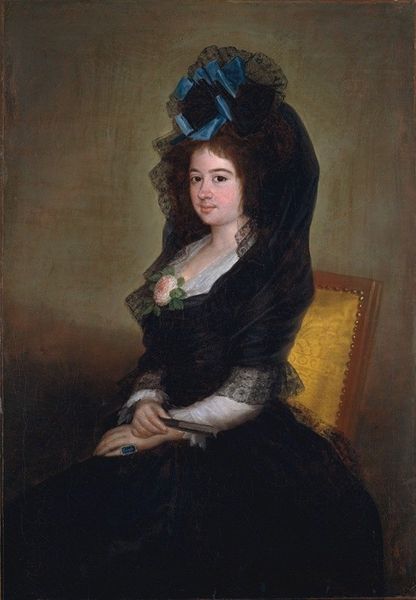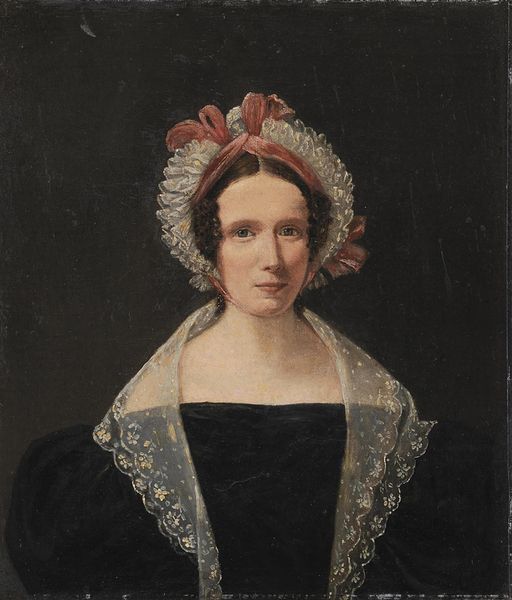
painting, oil-paint
portrait
painting
oil-paint
romanticism
orientalism
Copyright: Public Domain: Artvee
Curator: The subdued tones really capture a specific mood; it's quite dreamlike. A stillness, almost melancholy, permeates the portrait. Editor: That's an interesting read. What stands out to you about the formal aspects? I’d like to introduce listeners to Eugène Delacroix’s "Portrait of a Woman in a Blue Turban," executed circa 1827. It’s oil on canvas. Curator: Certainly. Immediately, I am struck by Delacroix’s brushwork, its looseness hinting at the Romantic spirit. Look at the interplay between the muted blues and browns – how the cool turban contrasts with the warm shawl. And note that centralized placement, directing our focus right back at the subject. It's all about contrast and controlled emotion. Editor: It's also a striking example of Orientalism gaining momentum in Europe. Paintings like this tapped into a public fascination. This exoticism was closely intertwined with European colonial ambitions, and portraits, like this, played a pivotal role in shaping those perceptions and validating such desires. It perpetuates a visual language of difference, setting up a clear power dynamic between the observer, that is the viewer, and the observed. Curator: Yes, I understand that viewpoint, and while valid, I am mostly just seeing how Delacroix manages to balance line and color here. Note that the woman’s gaze directed away creates a sense of mystery; her expression unreadable. The jewel that is attached to her garment draws the viewer downward but only to be met by the muted colors of her wrapping, as a compositional strategy it seems a tad bit obvious. Editor: Obvious perhaps to our contemporary eyes. One also needs to account for how exhibitions in London and Paris amplified the narratives of conquest and adventure, particularly towards North Africa, thereby fueling further such orientalist portrayals of women. The historical context profoundly impacts how we read her gaze today, as perhaps a passive object. Curator: True enough; our readings are always coloured by our present-day lenses. Though, stepping back again, I can see, too, the dialogue he is staging between Neoclassical form and Romantic fervor, that's inescapable when considering Delacroix. Editor: So, what remains, is this a painting reflecting imperial desires or the artistic wrestling with form and color? Maybe, and most likely, it’s both, inextricably linked. Curator: Indeed. That dialectic tension, as it relates to this beautiful painting, and others like it, certainly gives us something to chew on, even after we've left the gallery.
Comments
No comments
Be the first to comment and join the conversation on the ultimate creative platform.
